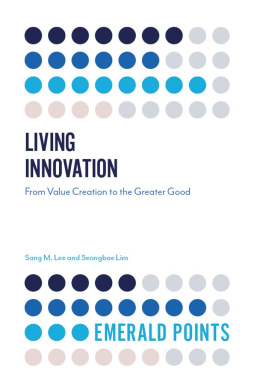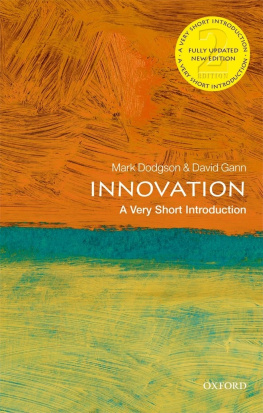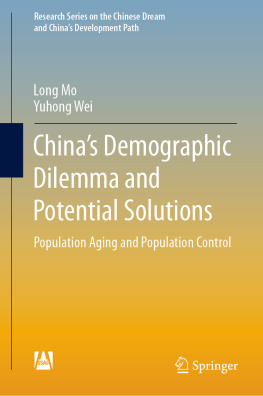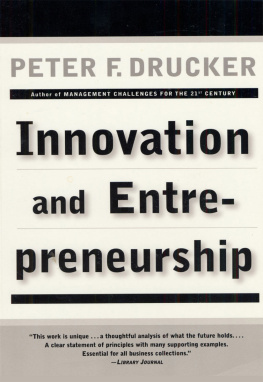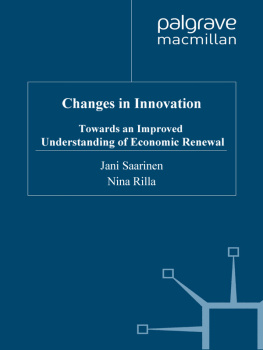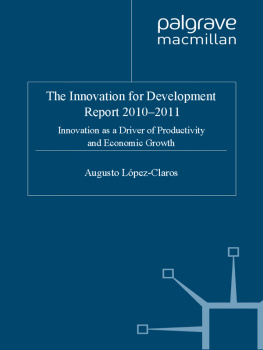
This edition first published 2018
2018 James Liang
Registered office
John Wiley & Sons Ltd, The Atrium, Southern Gate, Chichester, West Sussex, PO19 8SQ, United Kingdom
For details of our global editorial offices, for customer services and for information about how to apply for permission to reuse the copyright material in this book please see our website at www.wiley.com.
All rights reserved. No part of this publication may be reproduced, stored in a retrieval system, or transmitted, in any form or by any means, electronic, mechanical, photocopying, recording or otherwise, except as permitted by the UK Copyright, Designs and Patents Act 1988, without the prior permission of the publisher.
Wiley publishes in a variety of print and electronic formats and by print-on-demand. Some material included with standard print versions of this book may not be included in e-books or in print-on-demand. If this book refers to media such as a CD or DVD that is not included in the version you purchased, you may download this material at http://booksupport.wiley.com. For more information about Wiley products, visit www.wiley.com.
Designations used by companies to distinguish their products are often claimed as trademarks. All brand names and product names used in this book are trade names, service marks, trademarks or registered trademarks of their respective owners. The publisher is not associated with any product or vendor mentioned in this book.
Limit of Liability/Disclaimer of Warranty: While the publisher and author have used their best efforts in preparing this book, they make no representations or warranties with respect to the accuracy or completeness of the contents of this book and specifically disclaim any implied warranties of merchantability or fitness for a particular purpose. It is sold on the understanding that the publisher is not engaged in rendering professional services and neither the publisher nor the author shall be liable for damages arising herefrom. If professional advice or other expert assistance is required, the services of a competent professional should be sought.
Library of Congress Cataloging-in-Publication Data
Names: Liang, James Jianzhang, author.
Title: The demographics of innovation : why demographics is a key to the innovation race / James Jianzhang Liang.
Description: Hoboken : Wiley, 2018. | Includes bibliographical references and index. |
Identifiers: LCCN 2017044554 (print) | LCCN 2017051971 (ebook) | ISBN 9781119408932 (pdf) | ISBN 9781119408949 (epub) | ISBN 9781119408925 (hardback) | ISBN 9781119408932 (ePDF) | ISBN 9781119408963 (e-bk)
Subjects: LCSH: Technological innovations--Economic aspects. | Population--Economic aspects. | BISAC: BUSINESS & ECONOMICS / Banks & Banking.
Classification: LCC HC79.T4 (ebook) | LCC HC79.T4 L5345 2018 (print) | DDC338/.064dc23
LC record available at https://lccn.loc.gov/2017044554
A catalogue record for this book is available from the British Library.
| ISBN 978-1-119-40892-5 (hardcover) | ISBN 978-1-119-40893-2 (ePDF) |
| ISBN 978-1-119-40894-9 (ePub) | ISBN 978-1-119-40896-3 (obook) |
10 9 8 7 6 5 4 3 2 1
Cover design: Ctrip
Cover images: Leaves image: Teia/Shutterstock; People image: Leremy/Shutterstock
Acknowledgments
First, and most importantly, I am very grateful to my advisor, Edward Lazear, who first introduced me to the field of labor economics at Stanford; special thanks also go to the late Gary Becker, who encouraged me to work on this topic during my postdoctoral study under his guidance at the University of Chicago. I benefited immensely from the collaboration with my fellow researchers, Wenzheng Huang and Hui Wang, who co-authored many articles with me on this topic. I am grateful to my research and executive assistants, ZhengYu Fang, Xiaomeng Xu, and Xinxin Wang, who helped with data gathering and analysis, and also to my friends, Wei Gu and Ted Fishman, who gave thoughtful feedback throughout the process.
About the Author
James Liang is both a prominent business leader and an accomplished economist. He is the co-founder and Executive Chairman of the Board of Ctrip.com (NASDAQ: CTRP), the largest online travel company in the world in gross merchandising volume in 2016, and the largest online travel company in China since 2003. Dr. Liang also served as Chief Executive Officer from 2000 to 2006 and from 2013 to 2016.
Dr. Liang is a Research Professor in Economics at Peking University. He received a PhD in Economics from Stanford University in 2011. He publishes academic papers in top economics journals (such as The Quarterly Journal of Economics and the Journal of Political Economy) on a broad range of labor economic topics such as demographics, innovation, entrepreneurship, and productivity. He has also written extensively on policies related to demographics and innovation. He is the author of China Needs More Babies, the first book published in mainland China that criticizes the one-child policy.
Prior to Ctrip.com, Dr. Liang held a number of technical and managerial positions with Oracle Corporation from 1991 to 1999 in the United States and China, including Head of the ERP Consulting Division of Oracle China from 1997 to 1999. He received his master's and bachelor's degrees from Georgia Institute of Technology. He also attended the China Gifted Youth Class at Fudan University at the age of 15.
Introduction
Since the Industrial Revolution, human society has undergone tremendous economic and social change. Economically, average per capita income grew more than 10 times, and people in developed countries are 100 times wealthier than they were 200 years ago. Historically, innovation has always been the driving force for economic development, but it is only recently that technology companies have become the main engine of wealth generation. In 2011, Apple overtook Exxon, an oil producer, to become the most valuable company in the world. In 2015, five of the top 10 most valuable companies were technology companies founded in the last 40 years. The Chinese Internet giant Alibaba.com is now the most valuable company in China, with over US$250 billion in market capitalization, and is ranked only after the big five U.S. technology companies.
Equally dramatic has been the rise of China over the last 40 years. China has transformed from a backward country to the second largest economy and the largest exporter in the world. Much more significantly, China is catching up as a hotbed of innovation, even more quickly than its near miraculous emergence as a dominant exporter a few decades ago. China's overall spending on research and development is growing at 15% a year (). This is much faster than its GDP growth. China already spends more on research and development than all the European countries combined, and will outspend the United States by 2020 on a purchasing power parity (PPP) basis. Wealthy, developed nations such as the United States, Japan, as well as many of the European countries are naturally concerned whether they can continue to reign supreme in the race of innovation that is set to shape the twenty-first century. These established players are all striving to uncover what the best strategies for competing with emerging innovation powerhouses like China and India are. For technology companies, the key success factor is human resources; analogously, it is the view of this book that demographics, more than any other factor, is the ultimate determinant of success in innovation. This view has huge policy implications in areas such as education, immigration, as well as social policies such as, for example, support offered to growing families.
Next page

